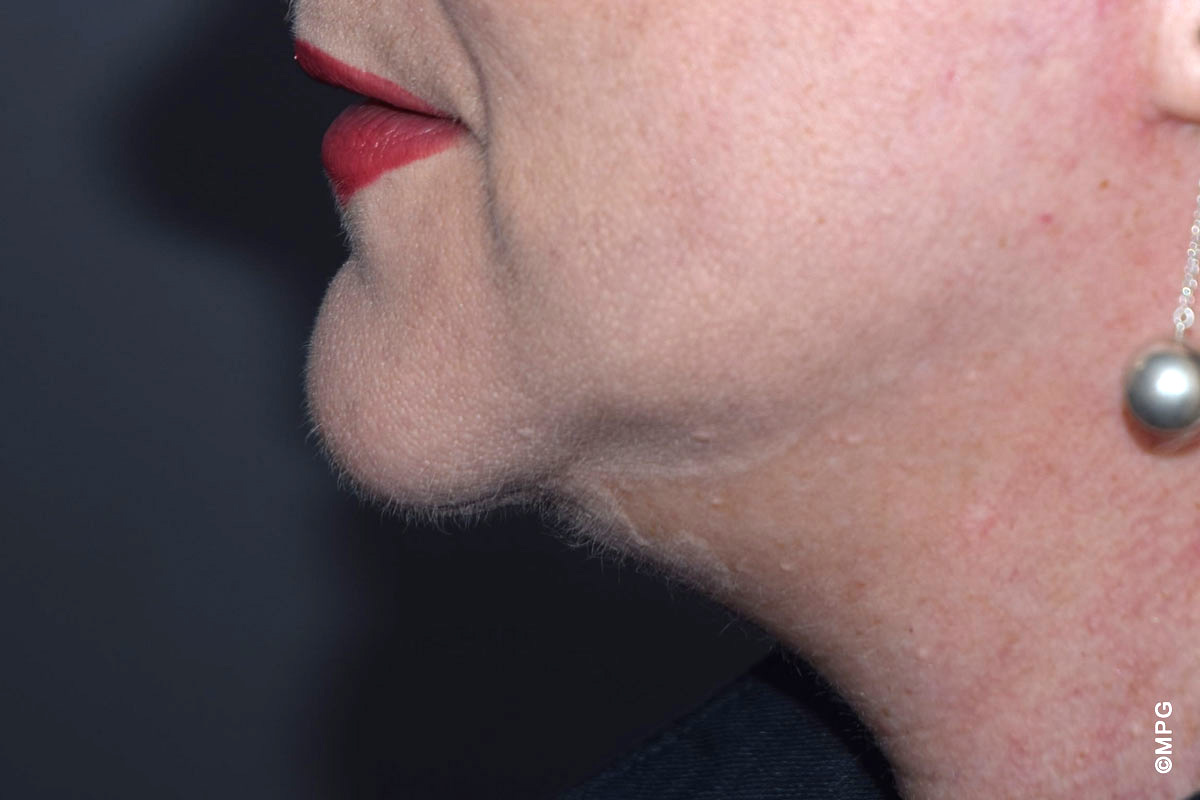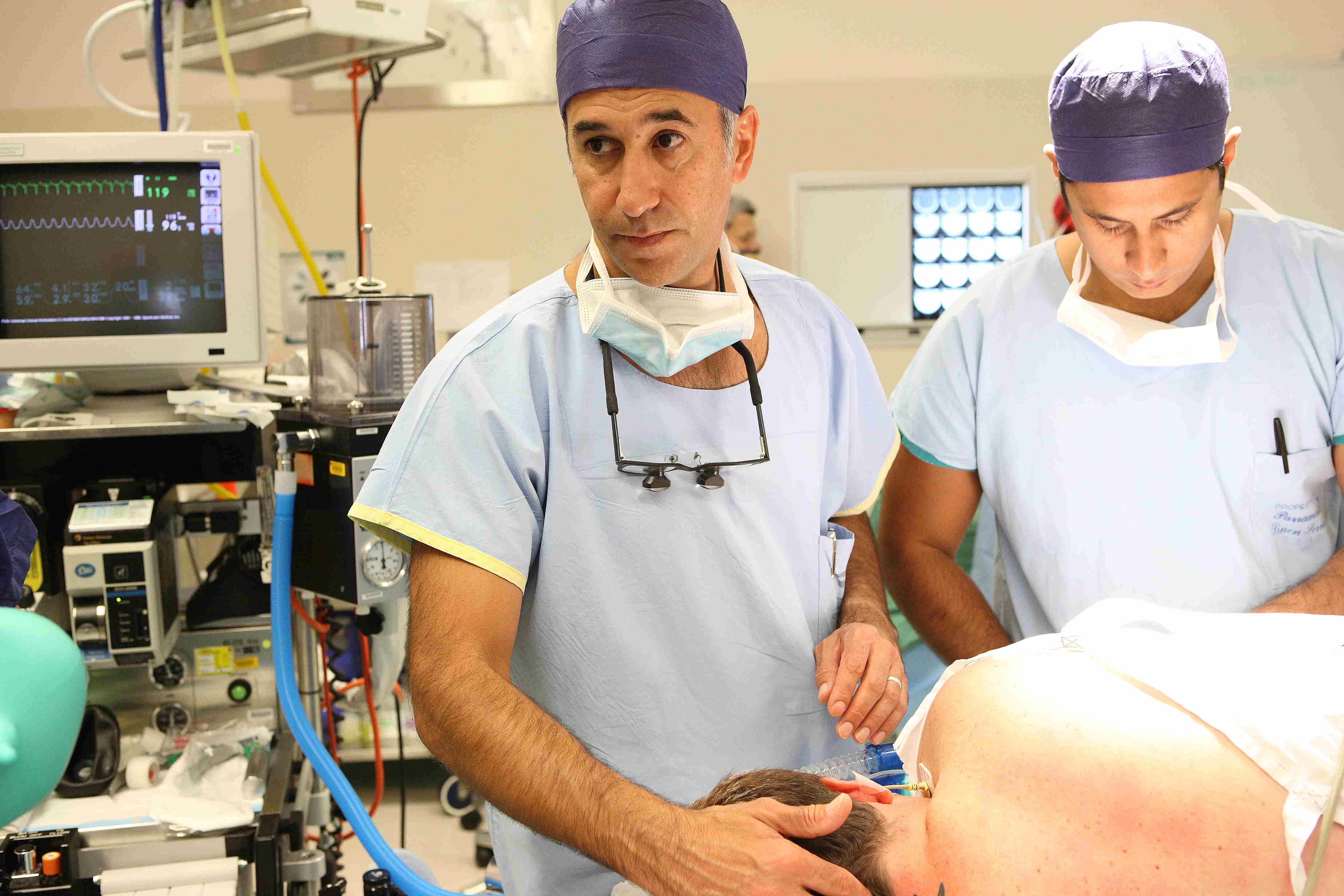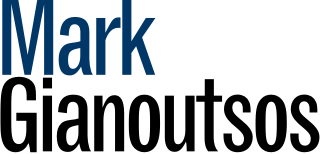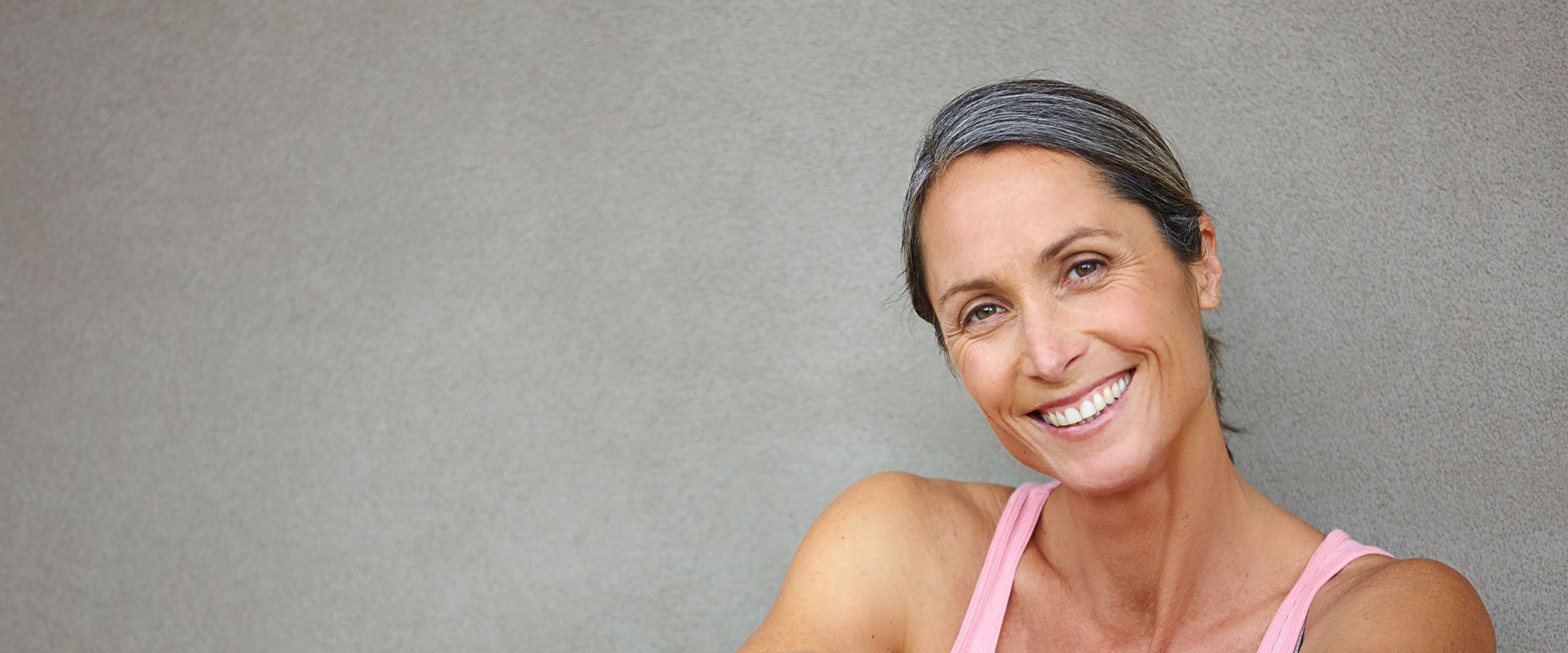Face & Neck Lift / Rejuvenation
The key to a successful face or neck lift is a natural and balanced result. The overdone face lift is instantly recognisable and entirely undesirable. The best procedure or combination of procedures to best suit a patient’s needs and wishes needs to be individually determined by careful examination and assessment.
FACE LIFT, or meloplasty, is a procedure that can be performed in a number of ways and is frequently undertaken in combination with a neck lift, or other facial rejuvenation procedures, such as blepharoplasty, browlift, genioplasty or rhinoplasty.
There is a great deal of terminology relating to face lift procedures. Broadly they fall into two categories – more traditional long incision approaches, or short incision procedures, which avoid scars extending behind the ear and into the hairline, for which younger patients are generally better candidates. This is a variation of a MACS lift.
The skin is only one element of a face lift, however. The deeper layer of tissue, the SMAS (Superficial Musculo Aponeurotic System) is a vital structure, which in repositioning and resuspending, provides the platform upon which a successful face lift procedure is based. In some circumstances it is appropriate to elevate and reposition tissues at a deeper plane again. This is the subperiosteal face lift technique.
Generally, the deeper the tissues addressed and the more that is done, the more profound and long lasting the result. This is also accompanied by a longer recovery period while swelling and bruising resolve.
Loss of definition of the angle between the neck and the chin is a common complaint in those considering a face lift and the platysma muscle investing the neck is the equivalent deep tissue to the SMAS in this area. In such patients it is often in their best interest that a further small incision beneath the chin is used to access and modify this layer – a so-called platysmaplasty.
The scars following a face lift are largely concealed within the hairline and hidden around the ear and once mature, are generally inconspicuous. While the placement of these scars and the relatively little tension they are under makes them very reliable, the outcome of a particular scar in any given patient can never be guaranteed.
A NECK LIFT redefines the jawline and gives definition back to the chin and neck area. It is frequently performed in combination with a face lift.
Often the first signs of ageing are seen in the neck, with loose skin and a loss of definition between the jawline and neck itself – the so-called “turkey-neck”. There are a number of anatomical contributors to this appearance – the skin, the underlying muscle, as well as fatty tissue. Also, the underlying bony jaw structure and the neck itself make some patients more prone to early ageing in the area. Rejuvenation of the neck requires a careful assessment of all these to ensure it is addressed in the best manner for the individual patient.
If you feel like your facial tissues are beginning to sag – with sallow cheeks, jowls or “crepey” and loose neck skin. Or, if you have a double chin, are losing the definition between your neck and chin, or have excess and sagging skin in your neck, or the so-called “turkey neck”, then a face or neck lift may well be a consideration for you. A personalised consultation with A/Prof Gianoutsos will provide you with an experienced and careful assessment of your concerns and the appropriate approach to achieve your desired result.
FACE – A/Prof Gianoutsos will do your procedure under general anaesthesia with one of the expert and experienced specialist anaesthetists with whom he works on a regular basis.
There are a number of different techniques to achieve surgical facial rejuvenation. In broad terms, they can be divided into techniques that involve a shorter, or longer, incision dependent largely upon the degree of skin laxity.
The skin is carefully and precisely elevated from the underlying tissues before the deeper tissues are tightened – this is where the real changes are made. This also means that the overtightened and “operated” look is avoided. The skin is then redraped in an elevated and rejuvenated position and the excess skin is removed. There is relatively little tension on the skin and this means the scars which are in visually hidden areas are also generally very inconspicuous.
The procedure is often combined with brow lift or blepharoplasty and more often with structural fat grafting to return some of the youthful fullness to the face.
NECK – Depending upon the exact nature of the elements of your condition as well as your age, there are a number of procedures which may be performed either alone, or often in combination. These range from liposuction alone, which is usually done in younger patients, to skin tightening or a full neck lift and “platysmaplasty”. Often a neck lift will form part of a more extensive facial rejuvenation in combination with a face lift, brow lift or blepharoplasty.
A/Prof Gianoutsos performs neck rejuvenation surgery under general anaesthesia.
FACE – At the end of the operation, A/Prof Gianoutsos will place a padded dressing on the face and under the chin. This generally stays on for around 48 hours at which time it is removed and you are able to shower and wash your hair before a smaller supportive chin strap is placed. You will wear this for around two weeks.
NECK – Post operatively a dressing will be applied. Depending upon the extent of your neck rejuvenation, this may be a simple Velcro fixed chin strap through to a larger dressing as per a face lift. You will have some swelling and bruising for around two weeks depending upon the extent of your procedure.
Many patients find they are most comfortable spending 48 hours in hospital – not that they are particularly in pain, but that they are able to take it very quietly in the care of our excellent nursing staff.
Less involved procedures can be done on a day only basis or with a single overnight stay. More simple neck lifts can be done as a day only procedure. Where the operation is more extensive, an overnight stay is preferable.
After discharge you will be seen at A/Prof Gianoutsos’ rooms to check your incision lines and remove any sutures. You will then be seen the following week to check all is progressing as anticipated. You will then be reviewed at around 6 weeks and then six and twelve months.
A/Prof Gianoutsos and his staff are available at any time should you have any queries or concerns.
FACE – Although you will be physically able to most day to day tasks within a few days, it is recommended that you plan to have three to four weeks out of your “normal circulation”. After two weeks most people are beginning to look fairly good, but may still be a little puffy or bruised. At three to four weeks you will look good and will continue to improve.
NECK – For the first 72 hours you should minimise any physical activity, particularly lifting, straining and stooping. Depending upon the extent of your procedure, you will need around two weeks out of your normal circulation. You should avoid very stressful physical exertion for 4 weeks.
Face and neck lift rejuvenation surgery gives you a refreshed look rather than an “operated” look. It is very unusual for others to pick that you have had it done although they realise that something is different, often commenting that you look well or rested. It sounds a little cliched, but it is true. With a neck lift, although you will see the difference straight away, the improved definition of your neck and jawline will be evident at around 6 weeks following your procedure. The area often feels firm and a little tight to you for longer than this but it will not be evident to anyone else.
All surgery carries at least some degree of risk. These are minimised by ensuring you are as healthy as possible and prepared for the operation, by selecting a properly qualified and experienced surgeon and allowing yourself a proper recovery period. The particular risks, as well as the expected perioperative course, will be discussed in detail with you at your consultation and you will have the opportunity to ask any questions.



Our Procedures

Our philosophy is to treat all patients as we would be expected to be treated ourselves.
A/Prof. Mark Gianoutsos


